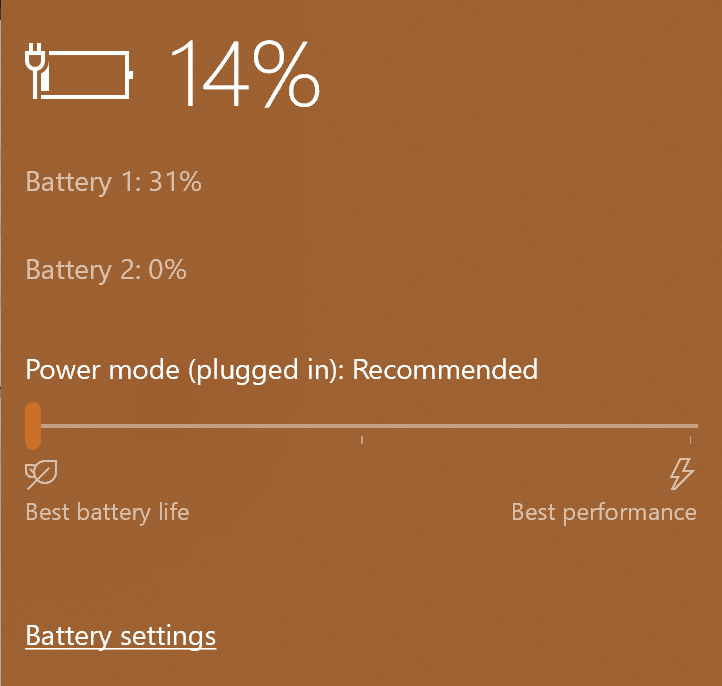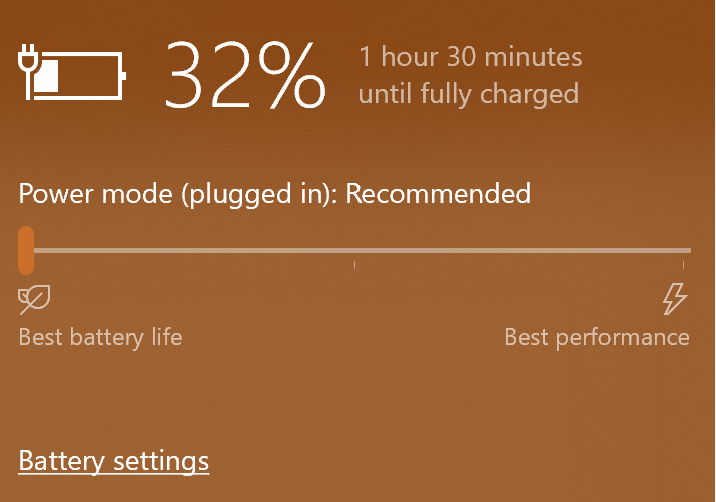Hi
AhmedSiliem,
Thank you for reaching out to Microsoft Community.
I think the dGPU (NVIDIA GeForce GTX) has nothing to do with the issue. It seems that the Battery 2 (battery on keyboard) is not detected by the device. Please run these steps to troubleshoot the issue on your Surface Book
battery:
1: Run
Surface Diagnostic Toolkit
2: Update drivers and firmware
Check what is the current OS Build of your Windows version by going to
Settings > System >
About.
Go to
Download driver and firmware for Surface, choose Surface Book then click
Download on the next page.
Choose the .msi file that matches your current OS Build and click
Next.
Make sure the Surface is plugged in and confirm that the tip/LED is lit
Open Device Manager then expand Batteries
You will see 2 battery drivers, right-click on each one then choose Uninstall device
Note: If prompted with a checkbox stating "Delete the driver software for this device", check the box and click Uninstall.
After uninstalling, run and install the MSI file you downloaded earlier
Restart your Surface
3: Run System File Checker Tool
in Windows 10
If still the issue persist, I suggest that you proceed in re-installing Windows on your Surface using a USB Recovery Image. This option will reimage the entire device and reload Windows including the drivers and firmware. It is the most complete form of
Reset and it will wipe out everything on the device so you might need to back up your files first. You will need also a 16GB/32GB of flash drive that must be formatted into FAT32 prior to downloading the Recovery Image. If you like to try, you can follow the
steps provided below:
How to Download, Create and Use a USB recovery drive
To download the Recovery Image:
- You'll need a PC running Windows 7 or later or Surface Device.
- Visit the page to
Download the recovery image for your Surface
- Sign in with your Microsoft Account
- From the list of Surface devices available, select the device that you need a recovery image for
Please note that while you will only be presented with devices that are currently registered on your account, you will also be presented with the option to get an image for a different type of device. If you try to use this option, you will be prompted to enter
the serial number for that device - Download the recovery image using the button on the page
- When the download bar pops up at the bottom of your screen, save the file in a location you will be able to find it.
Format USB Drive:
- Note: Formatting a recovery drive will erase anything that is already stored on your USB drive. Make sure to transfer any important data from your USB drive to another storage device before using it to create a Surface
USB recovery drive.
- Insert your USB drive into the USB port of your PC.
- From the desktop, open File Explorer
- Tap and hold or right-click on the USB drive and choose Format
- Select FAT32 as the file system and enter a Volume label to name the USB drive, such as RECOVERY, and then tap or click Start
- Tap or click OK to erase the contents of the USB drive
- Tap or click OK when the format is complete
Create a recovery drive:
- On your Surface or PC, open recovery image that you downloaded by double-clicking it or right click then select Extract and then Extract all.
- Select the USB drive you formatted earlier for the location and click Extract.
Use a USB recovery drive to reset your Surface:
- Shutdown the Surface
- Insert the USB recovery drive into the USB port
- Press and hold the volume-down (-) rocker
- Press and release the power button
- When the Surface logo appears, release the volume-down (-) rocker
- Surface will start the recovery software on the USB recovery drive
- When prompted, choose your language options and keyboard layout
- Select Troubleshoot
- Select Recover from a Drive. Choose Remove Everything and Fully Clean the Drive. Recovering this PC.
- If prompted, select Repartition the drives
- If prompted for BitLocker Key, tap Skip this Drive
If this answer your question, we highly encourage you to inform our Community by clicking on Yes or marking my post as an answer. This will help other members who may have the same issue as you. Otherwise, don't hesitate to
update us so we can further assist you.
Kind Regards,
Marrion Y.


